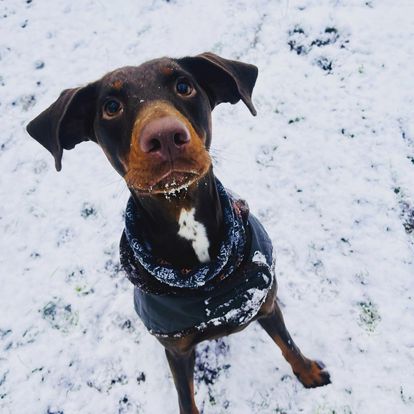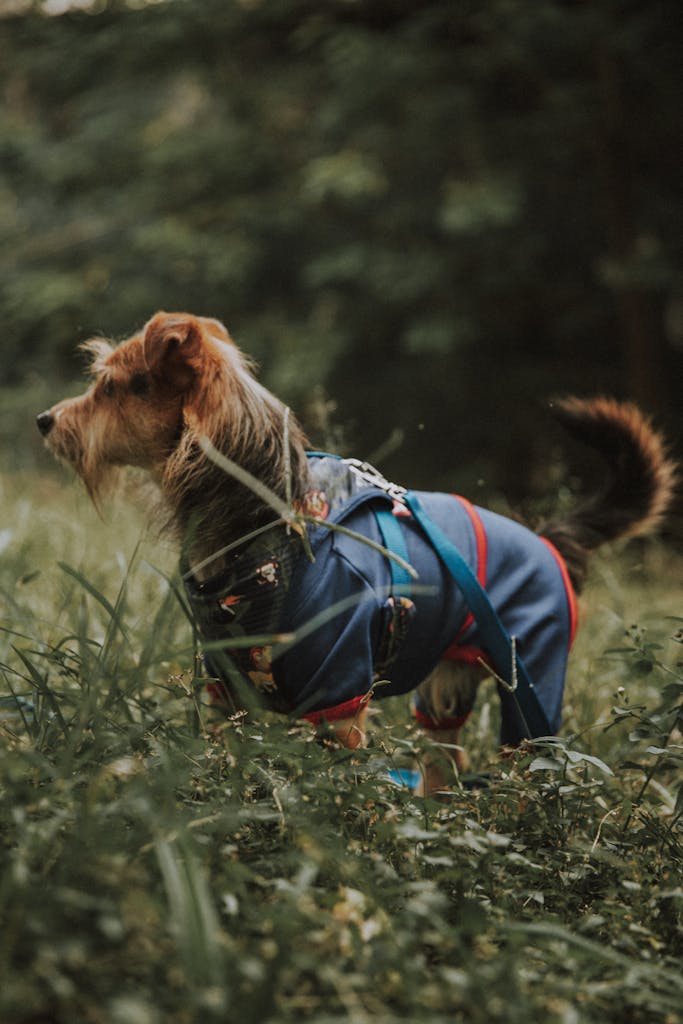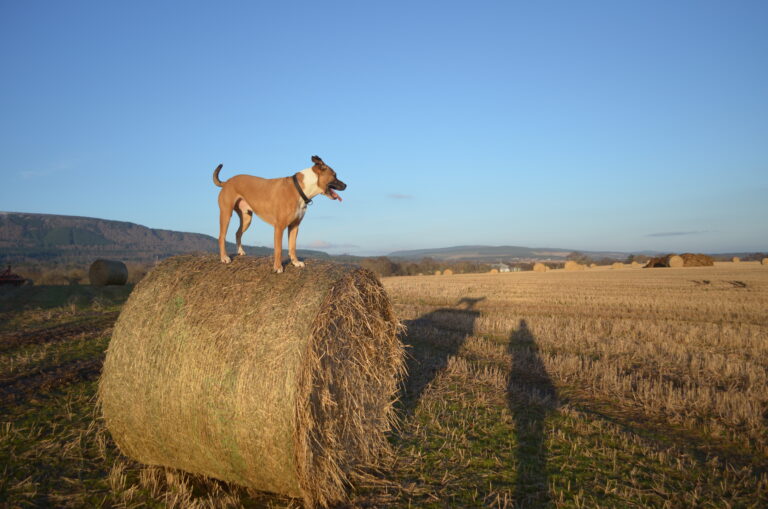There’s something special about running with a dog – the beat of their paws on the ground matching your pace, the fun of sharing an experience and the sense of adventure of having a companion by your side. For many people especially those between 20-45, having a dog and exercise is the ultimate combo of fitness and bonding. But while dog running sounds easy, it requires preparation, knowing your dog’s needs and a bit of training.
In this guide we’ll cover how to make running with your dog a fun, safe and enjoyable experience. Whether you’re just starting out and want to run around the block or training for long distances this is your one stop shop for tips, equipment and best practices.

The Benefits of Running with Your Dog
This is more than just a way to get fit – it’s about building a connection and creating a routine that benefits both of you. Whether you’re lacing up for a morning park run or gearing up for a longer adventure you’ll find running a dog adds a layer of fun and excitement to your exercise.
The relationship you build while running with your dog can have a big impact on both your physical health and your dog’s well being. Running is good exercise for you both to stay healthy and energised. It’s also fun for dogs as it allows them to burn off their excess energy in a productive way.

Dogs, especially high energy dogs thrive when they are physically active and running helps them burn off excess energy that might otherwise lead to behavioural issues. This is especially important for younger dogs who have lots of energy to burn.
But before you lace up your shoes and grab your dog’s lead it’s important to consider whether your dog is ready for this. Not all dogs are natural runners and just like humans they need time to adjust and train their bodies.
Choosing the Right Dog for Running
It’s no secret not all dog breeds are built for long distance running. Some dogs like Siberian Huskies, Border Collies and Labradors are naturals at endurance while others with short legs or giant breeds will struggle with longer distances.

Shorter distances are better for smaller breeds like Pugs or Dachshunds. The breed of your dog plays a big part in how far and how fast they can run. Breeds with short coats like Greyhounds will do better in hot weather while breeds with thick coats will prefer cooler climates.
You should also consider your dog’s age. Older dogs or dogs with joint issues may not be able to handle long distance running. Their joints will wear and tear especially on hard surfaces like concrete. A good running plan for your dog should always start with a visit to the vet to make sure they are healthy and can run safely.
Under 18 Month Puppy
Dogs under 18 months old should not run long distances as their growth plates are still developing. Running too early can damage their joints especially in larger breeds. Always consult with a vet to make sure your dog is fully grown and can handle the strain of running.
How to Get Started Running with Your Dog
So you’ve decided to run with your dog but how do you get started? Like humans dogs need to build up stamina and strength. Start by taking your dog on shorter distances and gradually increase the length and intensity of your runs. A gradual approach will ensure you and your dog don’t get injured and can run together for years to come.

Start with Walks
Before you run get your dog used to walking briskly by your side. This will reinforce obedience and let you see how well they respond to being on a lead. Walking is also a foundation to prepare your dog’s body for running and condition their muscles and joints.
If your dog pulls consider a waist belt or running belt to keep your hands free and in control. A running belt will make the experience much smoother for you and your dog and ensure you stay in sync during the activity.
Gradually Increase Speed and Distance
You wouldn’t attempt a marathon on your first day of running so don’t expect your dog to handle long runs immediately. Over several weeks gradually increase your pace and distance and watch for signs of fatigue like excessive panting or difficulty breathing. Pay attention to your dog’s body language – they will let you know if you’re pushing too hard.
Monitor Your Dogs Temp
Remember to also monitor your dog’s body temperature especially in hot weather as dogs can’t cool down as efficiently as humans. On very hot days running in the early morning or late evening will help prevent your dog from overheating.
Obedience Training is Key
Running with a dog that’s not well trained can be chaotic. Make sure your dog knows basic commands like “stop”, “heel” and “come” before you run. Training your dog to follow your lead will make the experience much more enjoyable. If you plan to run off-leash make sure you’re in a safe area and your dog has a reliable recall command.

Consider the Terrain
Dirt trails or nature trails are kinder to your dog’s paws than concrete or asphalt. Dogs’ paws are sensitive so avoid rough or hot surfaces especially in hot weather when the pavement can burn their feet.
Running on grass or dirt will protect your dog’s feet from injury and make the experience more comfortable. Long distances on hard surfaces can wear down your dog’s joints especially for larger breeds.
Hydration and Rest
Bring a water bottle for you and your dog and take regular breaks to let your dog cool down. Dogs can’t cool down as efficiently as humans so watch their body temperature and give them time to rest if needed.
During longer runs keep an eye on their overall health and make sure they’re staying hydrated. A collapsible dog bowl can be handy to give your dog water during your runs. Keeping them hydrated is key to their health and preventing heat related issues. If you think you dog is drinking too much water check out my other blog.
The Gear
When running with a dog the right gear can make all the difference. Get a running belt or waist belt to free up your hands while controlling your dog. This will make your run more comfortable and prevent any tugging or strain on your arms.
A well fitted harness is key to keeping your dog secure and injury free. Some dogs may also need booties to protect their paws from rough surfaces.

Having the right gear is not just about making the run smoother – it’s about safety. The right gear allows you and your dog to focus on the run, enjoy the experience and reduce the risk of injury or discomfort.
Don’t Forget The Basics
Always carry poop bags and a dog bowl for water on longer runs. If you plan to run off-leash make sure your dog is trained and the area is safe and legal for off-leash activities.
Running Safely with Your Dog
Safety should always be your number one priority when running with your dog. Watch your dog’s body language. Signs of discomfort like difficulty breathing or slowing down means it’s time for a break. Dogs can develop joint issues if they run too much too soon especially older dogs or those prone to joint problems.
Check the weather. Cold weather can be tough on dogs with short coats, hot weather can lead to overheating. Run in the early morning or late evening to avoid extreme temperatures and keep your runs shorter during harsh weather.
When running in cold weather make sure your dog is comfortable especially if they have a thin coat. You may want to get a coat for your dog to wear during cold runs.
Be Aware Of Distractions
Be aware of other dogs and distractions along your route. Running with a dog in crowded or busy areas can be overstimulating so choose routes that are quiet and peaceful.
If you’re running in areas with lots of other dogs keep control of your dog at all times. Use a lead to prevent any unwanted interactions and keep your dog focused on the run.
Running Long Distances with Your Dog
Once your dog is trained and used to shorter runs you can start to build up their endurance for longer distances. Remember some dogs can run for miles while others may need to stick to shorter distances due to age, breed or overall health.
When increasing distance add more food to their diet to keep their energy up and always make sure your dog is in top shape by checking with a vet regularly. Watch their body language for signs of fatigue and never push your dog beyond their limits.

Running with Your Dog
The benefits of running with a dog are countless for both you and your dog. Not only is it exercise but it strengthens the bond between you and your dog. Running is a way for your dog to burn off excess energy and improve overall health. It’s a fun way for you both to get healthy and enjoy the outdoors together.
Running with a dog can also improve your mental health. Running releases endorphins and having your dog by your side can enhance feelings of happiness and satisfaction. It’s a win -wiin for both body and mind.
You’ve made it to the FAQ!
Do dogs like running with humans?
Yes! Many dogs love running with their owners especially high energy breeds. Running gives them mental stimulation and physical exercise which are both vital for their overall health.
How to run with a dog?
The best way to run with your dog is to start slow, increase distance gradually and watch their body language. Always make sure they are well hydrated and take breaks when needed.
Can I run a 5K with my dog?
Yes as long as your dog is healthy and well trained you can run a 5K. Start with shorter distances and build up to the 5K over time.
What is running with dogs called?
Running with dogs is called canicross especially when using a hands free harness and leash system for the activity.
How far can I run with my dog?
Distance varies depending on your dog’s breed, age and fitness level. Many dogs can run 3 to 5 miles with proper conditioning but always check with a vet to see what’s best for your dog.
Do dogs like running with their owners?
Yes most dogs love running with their owners as it gives them exercise, mental stimulation and bonding time.
What to bring for a dog run?
A comfortable harness, a waist belt, water and a route that’s safe and suitable for your dog.
The End Part
Running with your dog is a great way to get fit and bond with your dog. With proper training, the right equipment, and an understanding of your dog’s needs, both you and your dog can enjoy a great exercise routine. Remember to start slowly, listen to your dog’s body language, and have fun!








